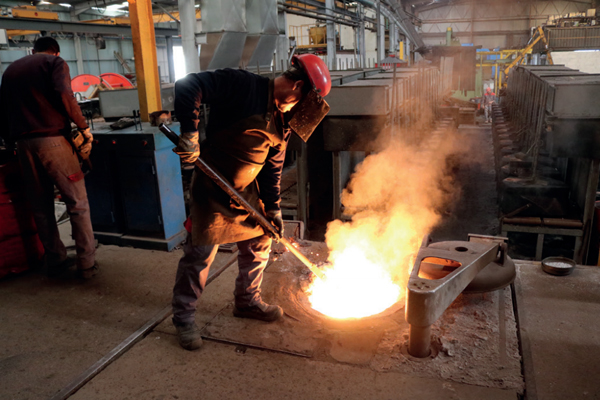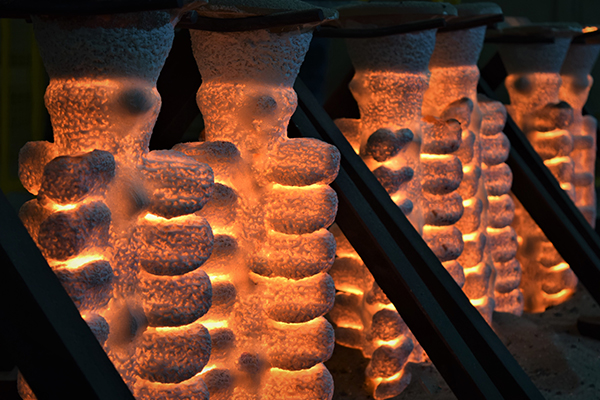As one of the oldest manufacturing techniques, the casting process involves pouring molten metal into a mould. After solidification and de-moulding the pieces will follow the necessary activities to accomplish the requirements – either Customer’s specific or international standards/codes.
Each type of casting process has its own benefits.
The main difference between Sand Castings and Investment Castings, also known as Lost Wax process, is as follow:
Sand castings uses a silica-based material to create a moulding surface. After achieving the required chemical composition, the molten metal is poured into a mould which has the desired shape cavity to cool down and solidify .
Main Characteristics of Sand Castings:
- Larger castings
- Good Dimensional Accuracy
- Good Roughness Quality
- Complex shape and near net shape design, if compared with forging or metal worked pieces

Investment Castings uses a wax pattern to make a mould. After being attached to the gating system, the wax “tree” is dipped into a refractory slurry forming a ceramic shell. This ceramic shell is then heated to melt and remove the wax, as well as to improve mechanical properties. Finally, the molten metal is poured into the ceramic shell cavity to cool down and solidify.
Main Characteristics of Investment Castings:
- Smaller castings
- High Dimensional Accuracy
- High Roughness Quality
- High Complex shape and near net shape design, if compared with Sand Castings




